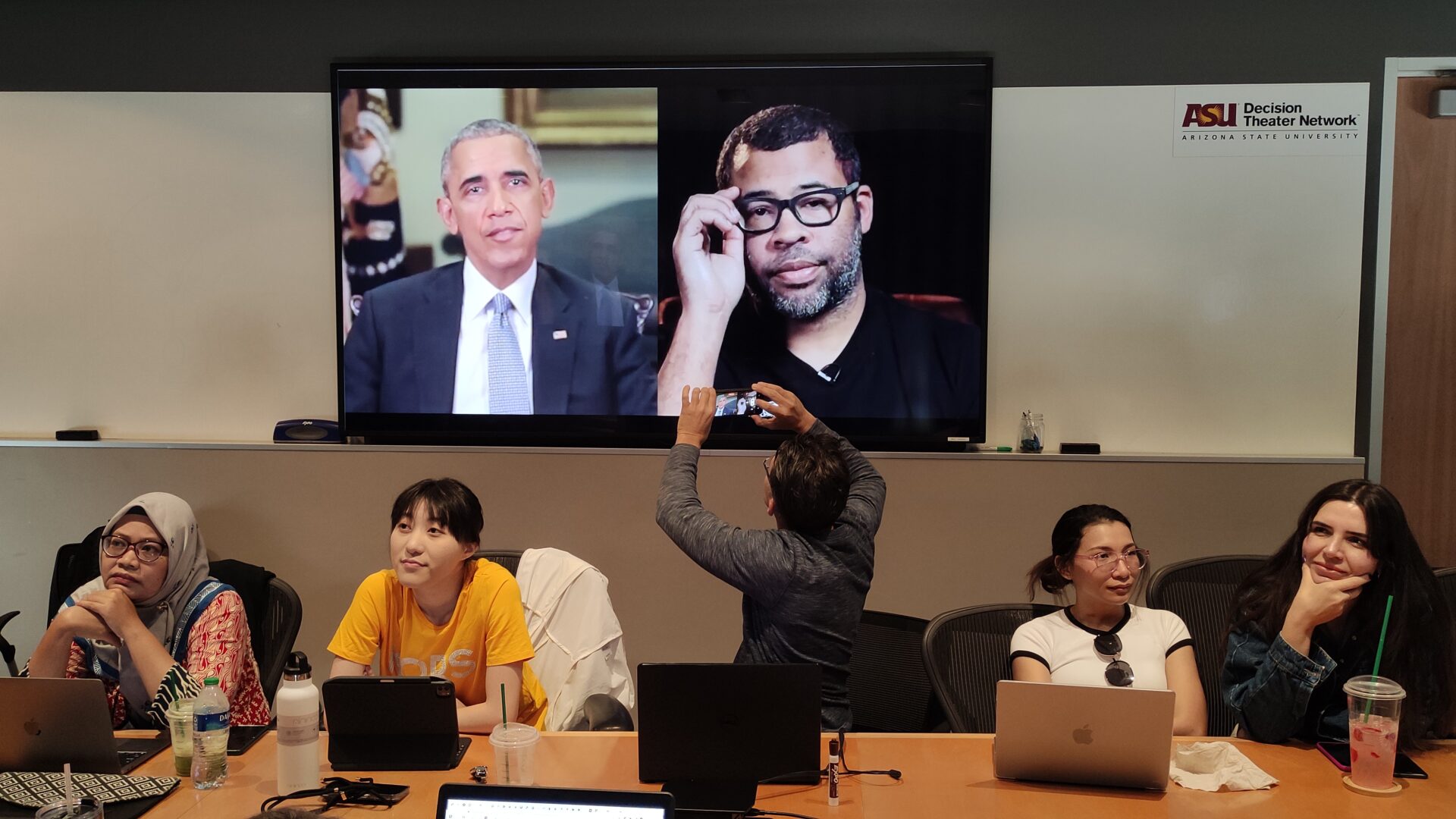Every day, an incredible amount of data is generated in the digital environment. This data comes from social media posts, commercial transactions, conversations on messaging apps, and all kinds of services available online. Approximately 2.5 quintillion bytes of data are produced daily, a truly immense figure that proves difficult to quantify, posing a formidable challenge for cybersecurity.
According to Cisco, cybersecurity means protecting systems, networks, and programs from digital attacks that aim to access, alter, or destroy sensitive information and spread disinformation. Disinformation is considered a cybersecurity issue, which was the topic of Monday’s debate among SUSI scholars at the Brickyard, ASU Tempe campus. These discussions hold great significance for all of us in the final week of our academic program. (It’s hard to believe that almost four weeks have already passed!)
The 2023 edition of the World Press Freedom Index, published by Reporters Without Borders (RSF), evaluated the environment for journalism in 180 countries and territories revealing the endangerment of press freedom due to the spread of disinformation and the fake content industry. According to RSF, the situation has significantly deteriorated over the past decade. In 2013, 26 countries provided favorable conditions for journalists, but now only eight countries can claim the same. A decade ago, the state of press freedom was “difficult” or “very serious” in 58 countries, whereas today, journalism professionals face a much more dangerous environment in 73 countries.
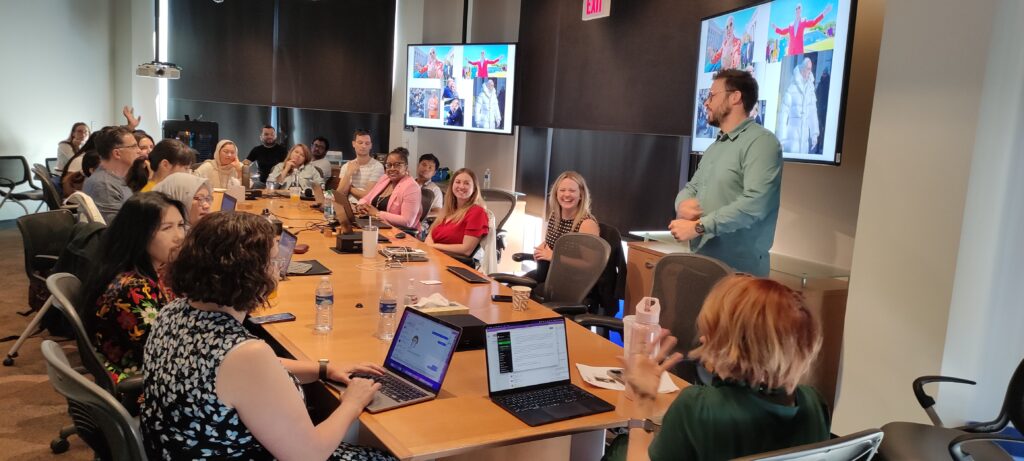
During the session held at Orchid House in the Brickyard, Assistant Director Roslynn Runia provided SUSI scholars with an explanation of the ASU Global Security Initiative (GSI), established in 2015. GSI operates with a holistic and practical approach, focusing on interdisciplinary research to tackle national security challenges, cyber threats, and data privacy. The initiative has a broad portfolio of government-sponsored research projects and collaborations with leading tech companies such as PayPal, Samsung, Google, Microsoft, and IBM. Additionally, it offers novel educational experiences for young talents interested in defense and security careers.
One of GSI’s research units is the Narrative, Disinformation and Strategic Influence (NDSI), directed by Dr. Scott Ruston. During the lecture, Dr. Joshua Garland, who serves as an NDSI Interim Director and Associate Research Professor, addressed the topic of information weaponization in cybersecurity. He emphasized the need to critically analyze what is behind information, where it comes from and what it is influencing.
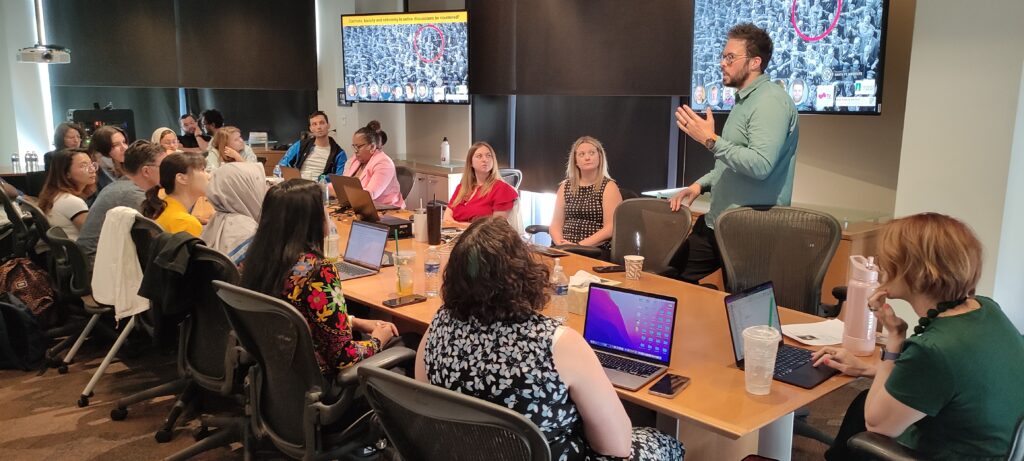
He highlighted that disinformation is a human problem rather than a technological problem. While numerous tools and techniques are available today to determine whether a piece of content was generated by AI, identifying elements such as sarcasm remains even more challenging. Dr. Garland showed some examples of deepfakes, and AI-generated false videos that are becoming more popular and convincing. In 2018, Director Jordan Peele created a fake video of former President Barack Obama to illustrate how easily one can manipulate someone’s words. As a challenge, the SUSI scholars were tasked with discerning whether two articles discussing an aquarium explosion in Berlin were authentic or generated by AI. After identifying the evidence of false content, Dr, Garland revealed the authentic article published on NYT last year.
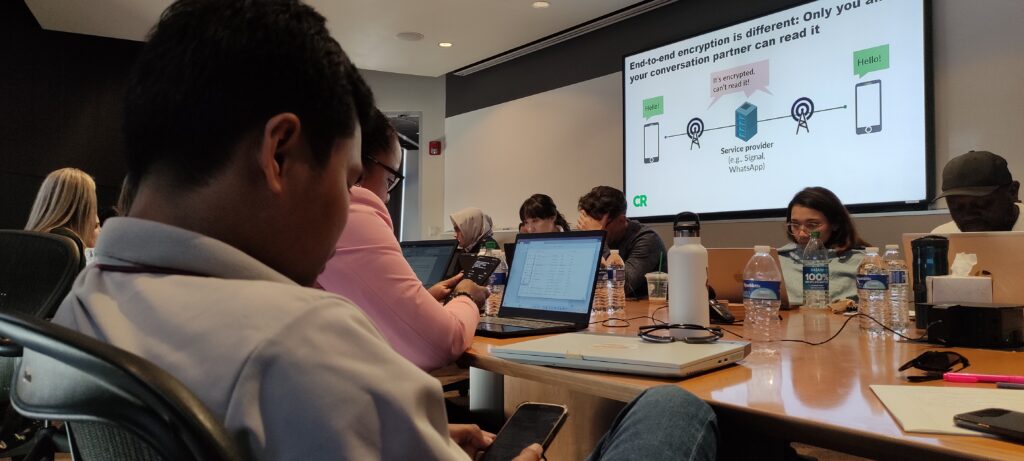
During the afternoon session, following a brief introduction by Jamie Winterton, Senior Director of Research Strategy, the SUSI scholars had the opportunity to meet Yael Grauer, an investigative tech reporter specialized in privacy and security, digital freedom, hacking, and mass surveillance, and a member of Investigative Reporters and Editors as well as the Internet Press Guild. Mrs. Grauer shared some examples of security violations in digital devices and provided valuable tips to improve digital security.
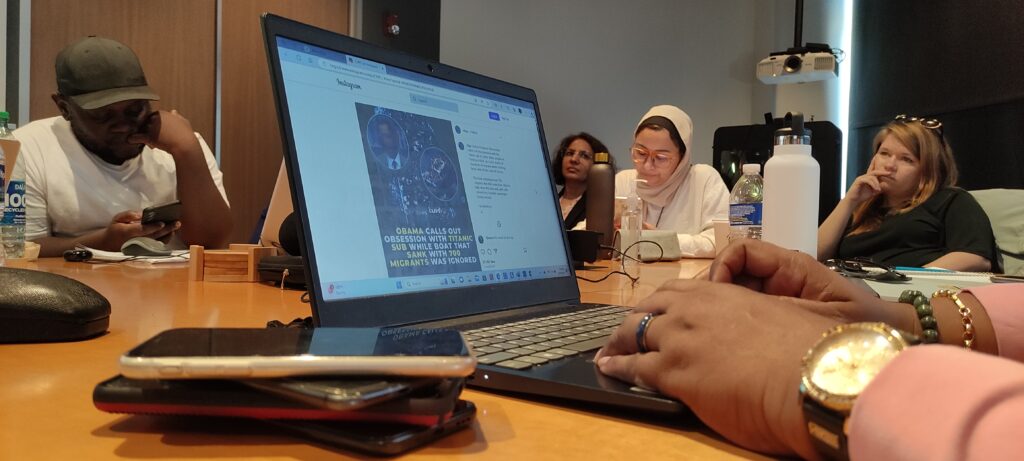
Disinformation and cybersecurity pose significant challenges in the digital era. Effectively managing these issues in a world where global private tech platforms employ algorithms to regulate internet content and governments engage in disinformation campaigns to further their own agendas is a formidable task. Both citizens and journalists have a big challenge ahead. The first step is to protect our data and devices. While achieving complete security may be impossible (without being overly paranoid), here are some links that provide cybersecurity tips specifically tailored for journalists:
- Global Cyber Alliance (GCA) – The GCA Cybersecurity Toolkit for Journalists
- Global Investigative Journalism Network (GIJN) – Digital Security
- International Consortium of Investigative Journalists (ICIJ) – Five digital security tools to protect your work and sources
